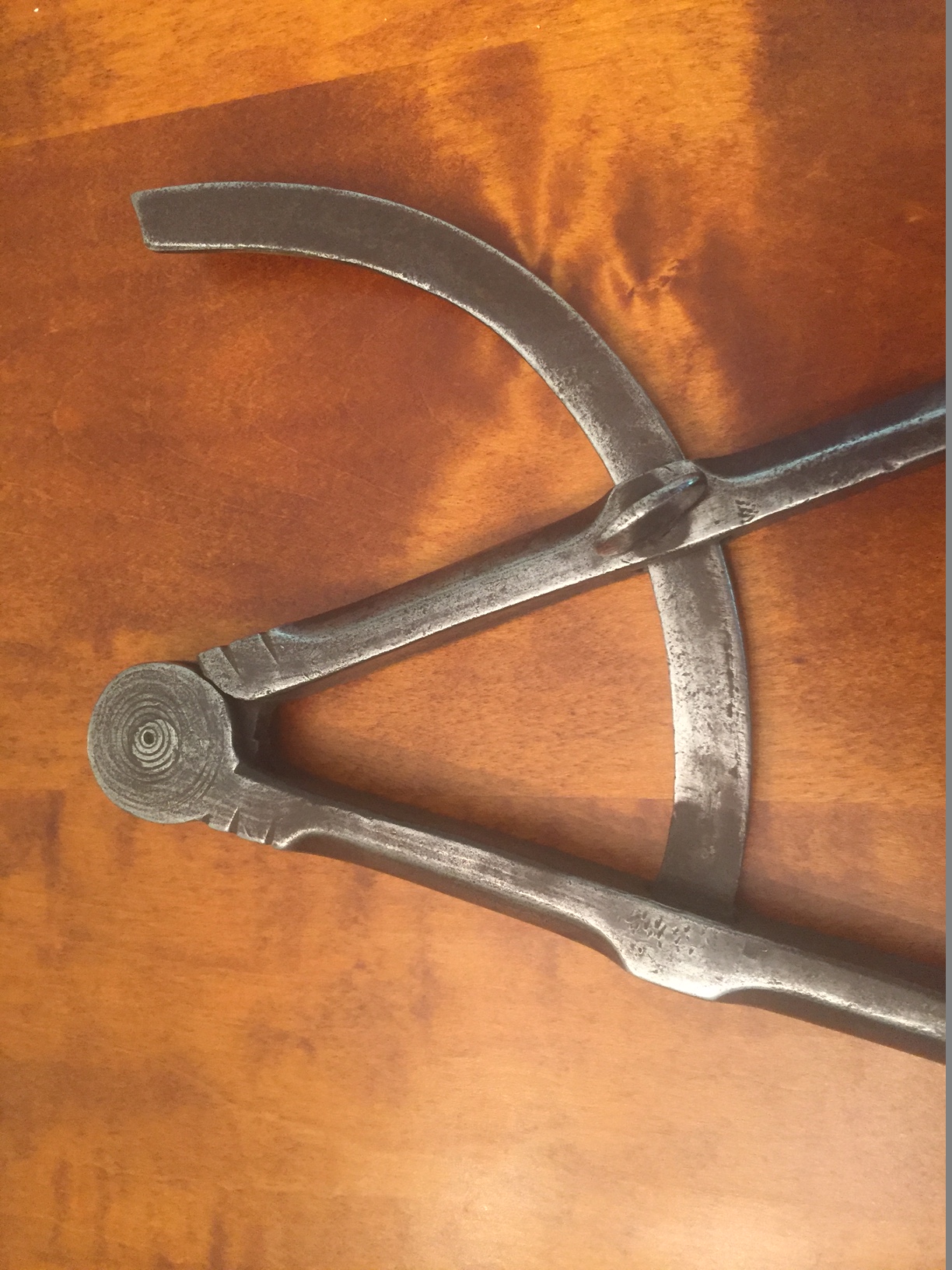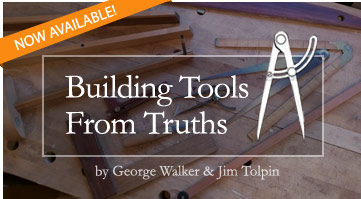This is a bit more detail from an Instagram post I published about dividers. In some trades, especially carpentry work, dividers were sized to provide a quick job site reference. The overall length when the dividers were closed could double as a handy way to step off common distances. Case in point is these two early blacksmith made dividers. The example on top is exactly 24″ long, the same length as the long leg of a carpenters square.
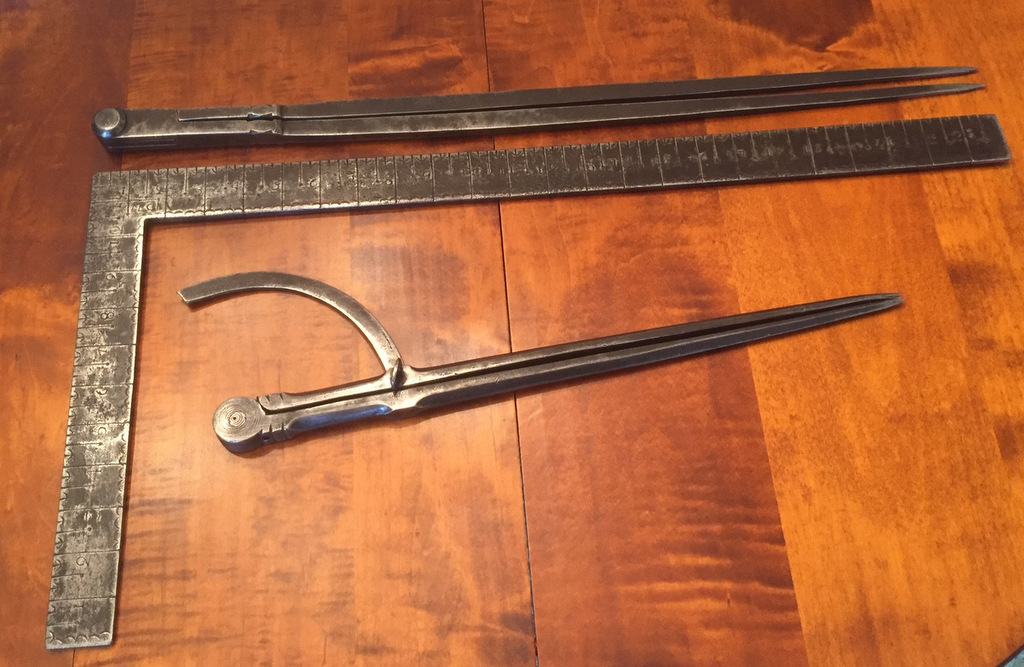
The smaller pair is a bit more mysterious. There’s a punch mark in the center of the fulcrum and the distance from the mark and the end of the legs is 16&1/2″. What’s that about? That’s actually a very important measurement to a pre-industrial artisan. That distance is exactly 1/12 of a “Rod”. A rod, also known as a perch or a pole was a standard distance used to step off longer distances before the invention of tape measures. A rod is 16 feet 6 inches long. Although that seems like an odd module to use as a standard, a 16&1/2 foot rod multiplied produced spans that were common on buildings from barns to cathedrals. For example, two rods equals 33 feet. Simple fractions of a rod like 2/3 of a rod is 11 feet. Using whole rods and simple fractions, you can step off the following distances – 11, 22, 33, 44, 55, 66, 77, 88, and 99 feet. All of these distances show up routinely in historic building foundations. Thus the divider above could be used along with a rod to step off a distance quickly and accurately. 55 feet is 3 rods plus 1/3 or four steps using our built in divider reference.
I had a few folks request more details on this particular tool, Here are some close ups
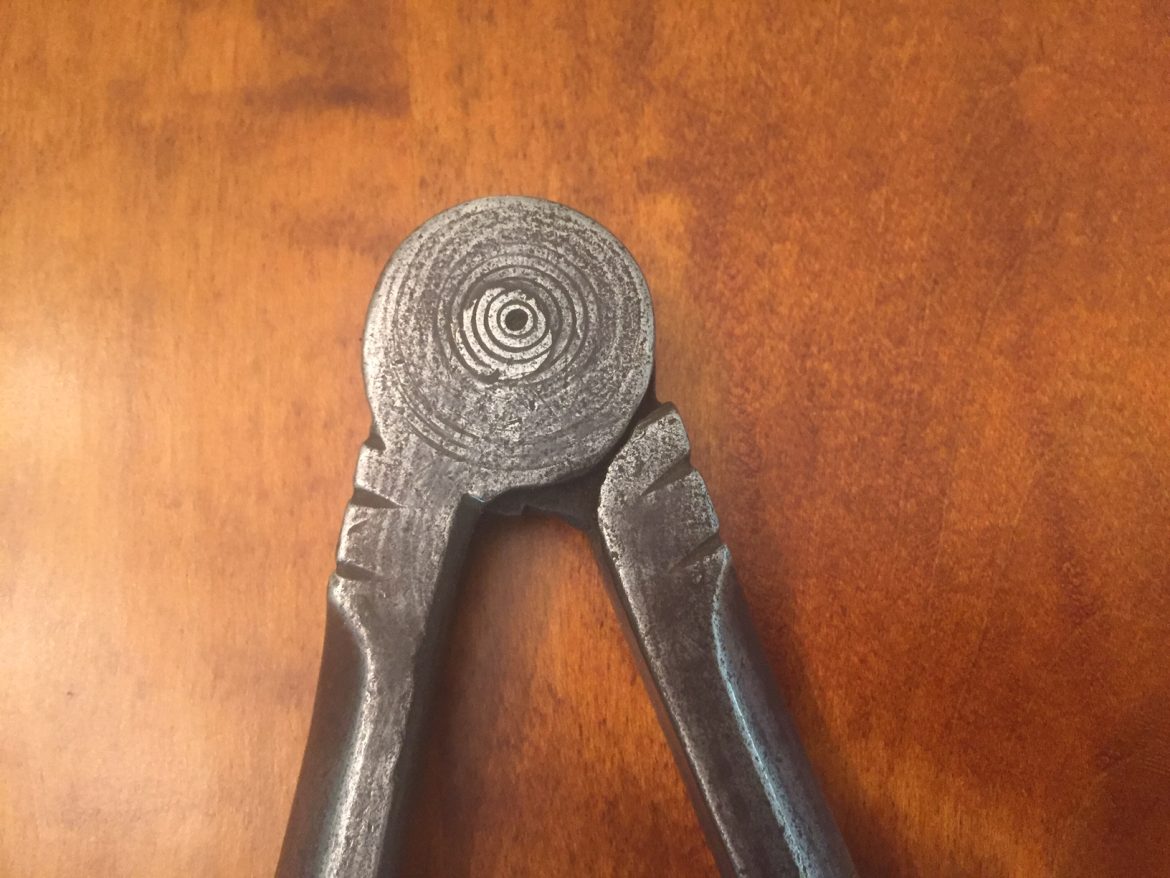
Note the grain of the wrought iron. I also wonder if the circles around the center are some sort of small scale reference or just some decoration. Any guesses how the maker would have made these rings? Yes, I know they look like they are made with another pair of dividers, but this is metal, not butter.
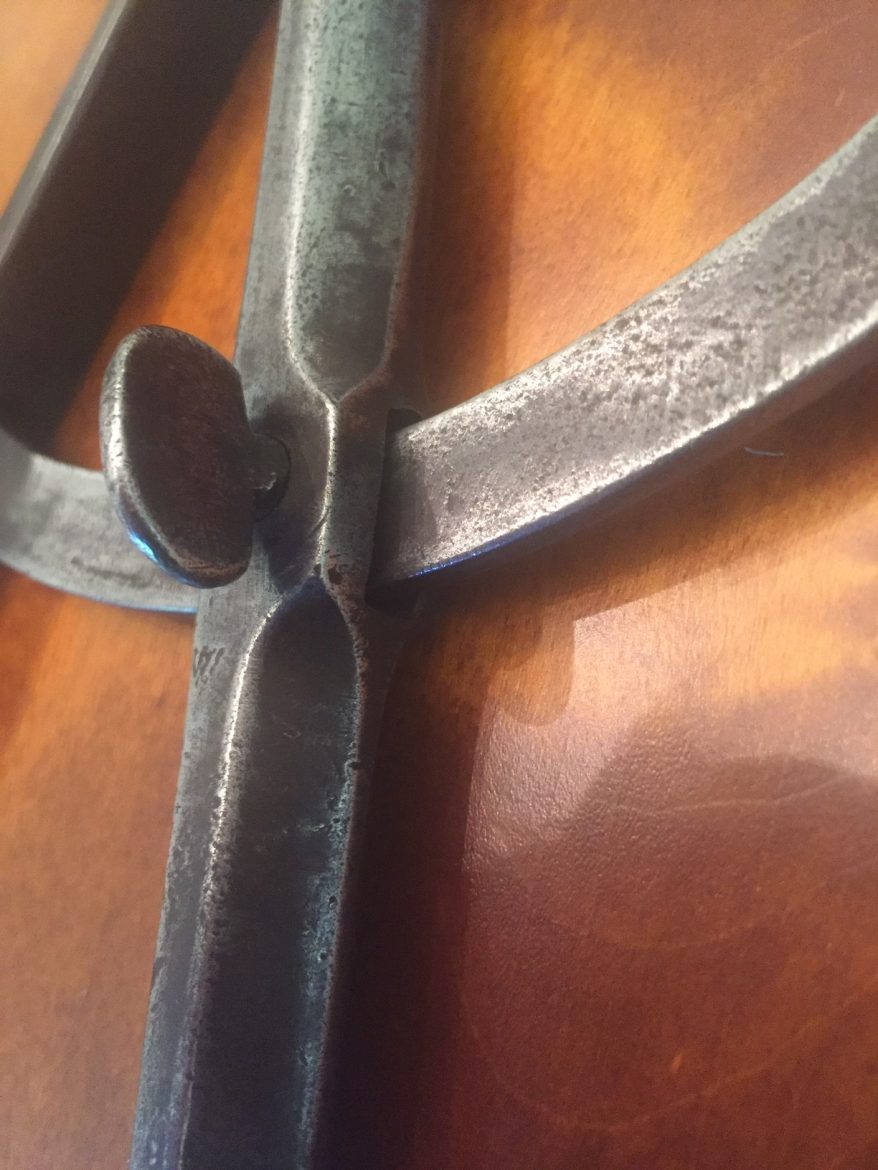
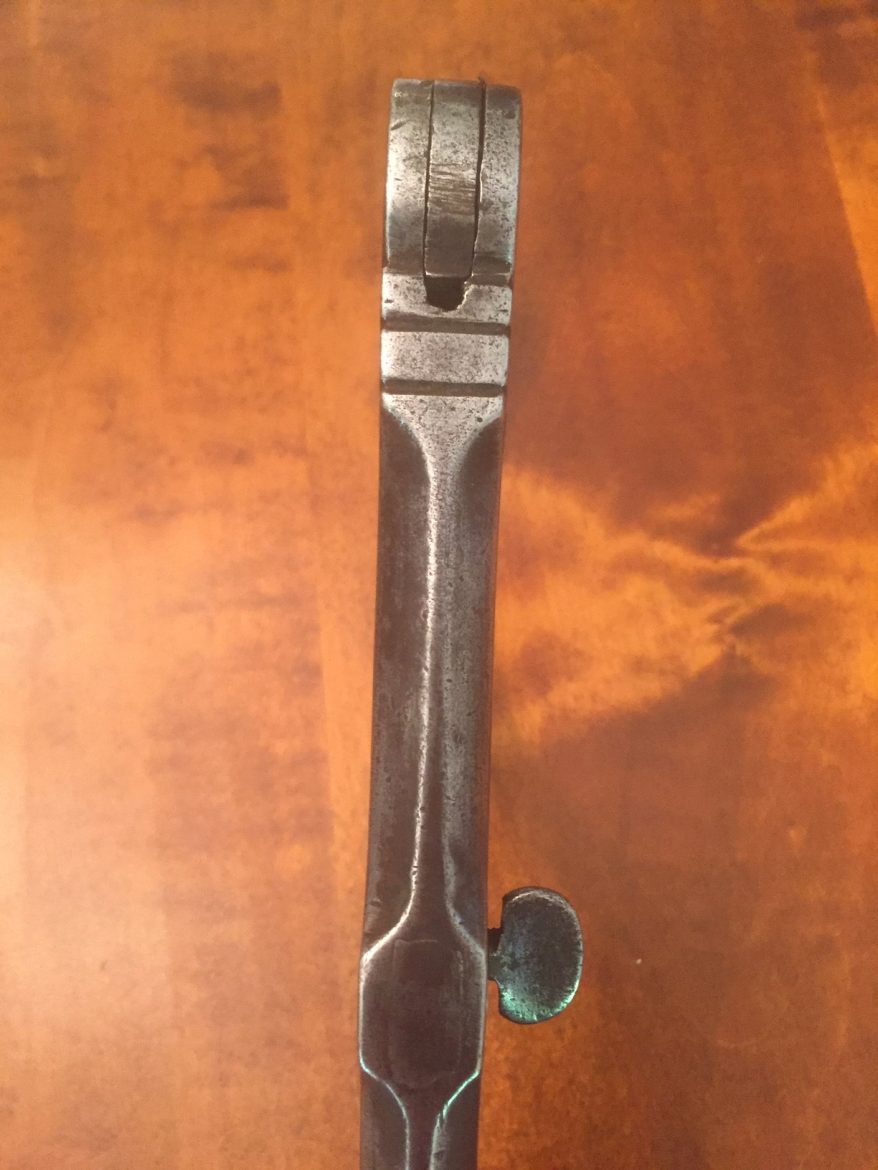
I’m not a smith but to my eye it looks like the legs start out square in cross section and are then forged into a tapered triangle shape except the section where the locking screw is located.
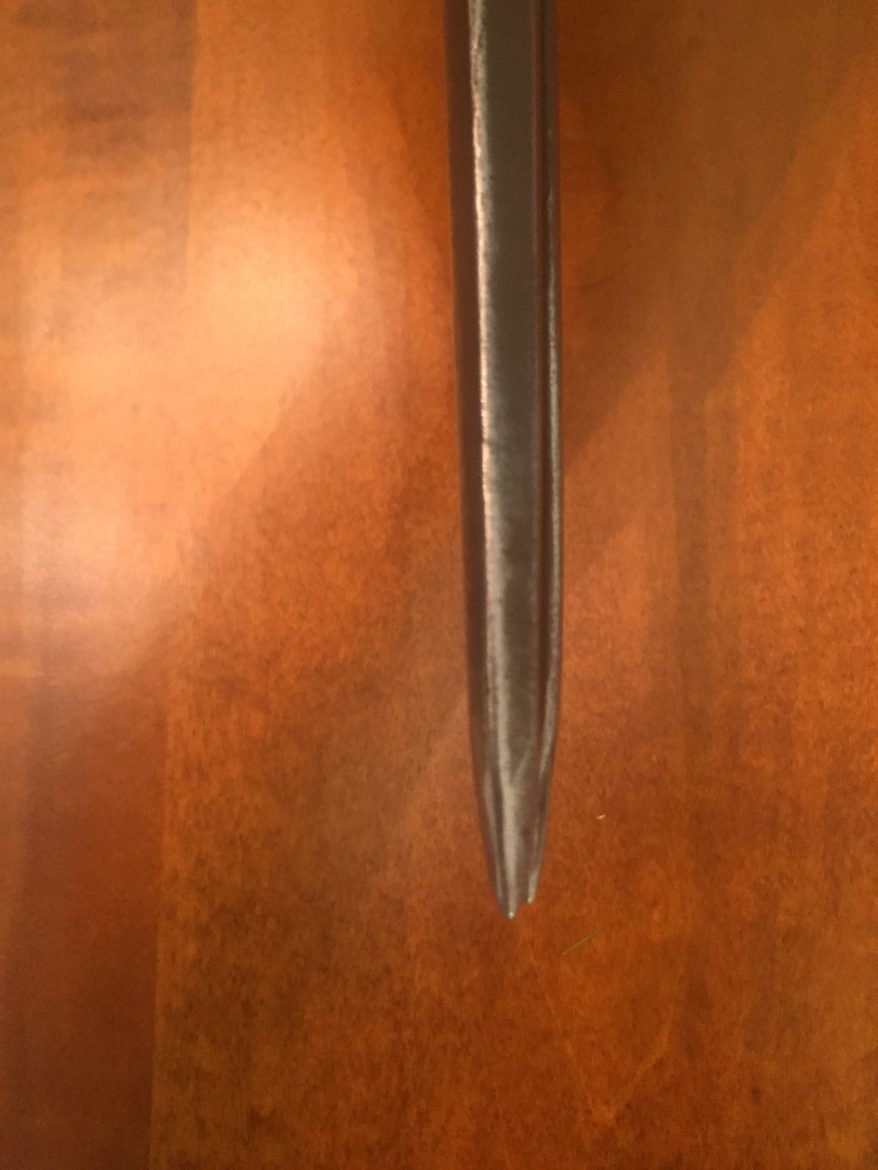
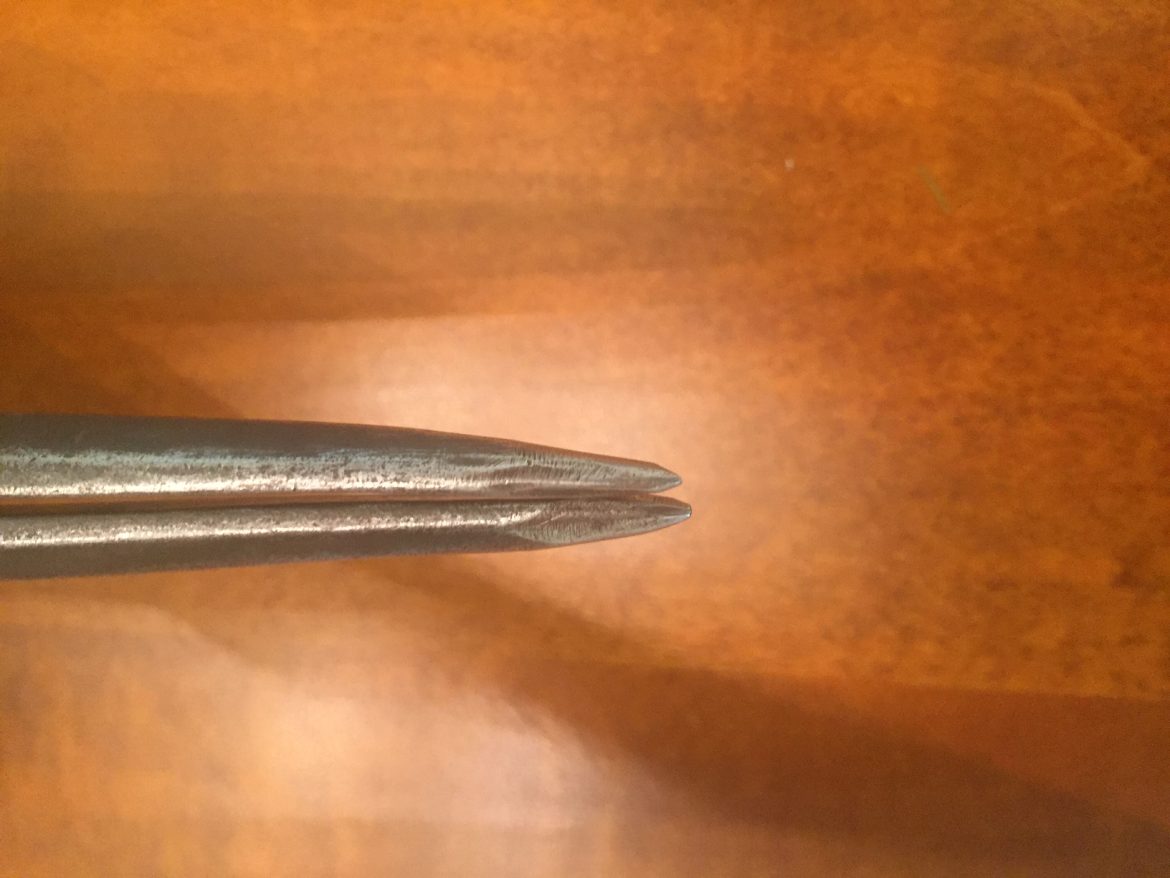
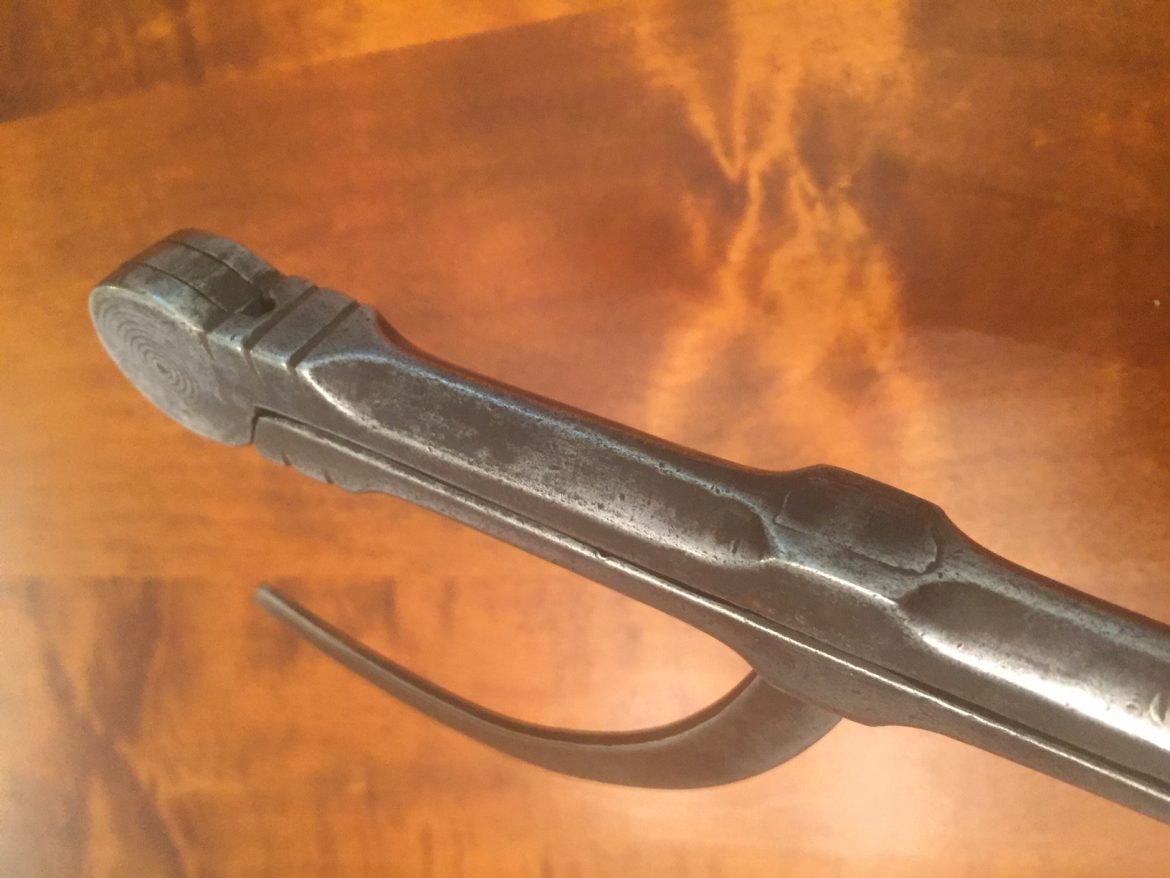
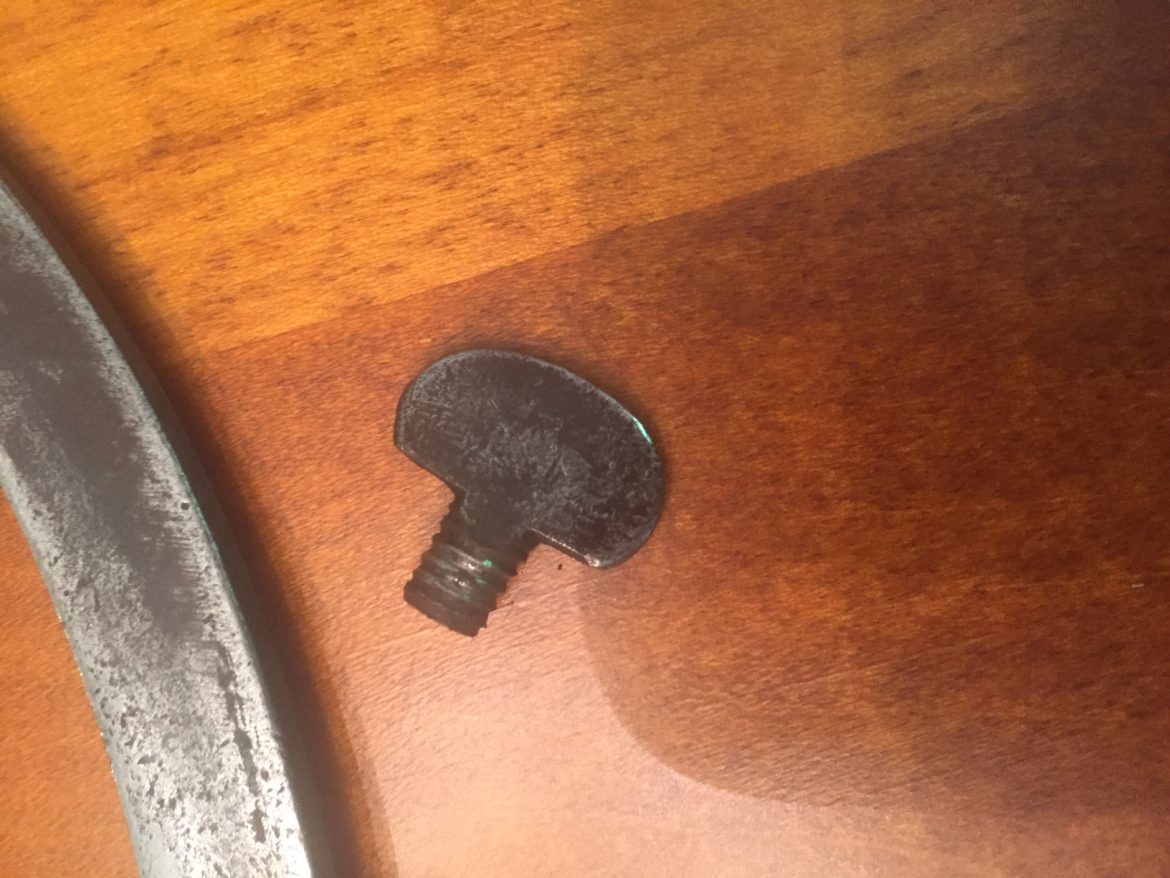
A couple of other thoughts. How much skill is required at the anvil to get these two tapered legs exactly the correct length? Along with all the other things that have to come together. From my perspective, this is much more sophisticated than it might appear. What stories could this tool tell? Who used it? What buildings did it leave it’s mark? More questions than answers.
George Walker

